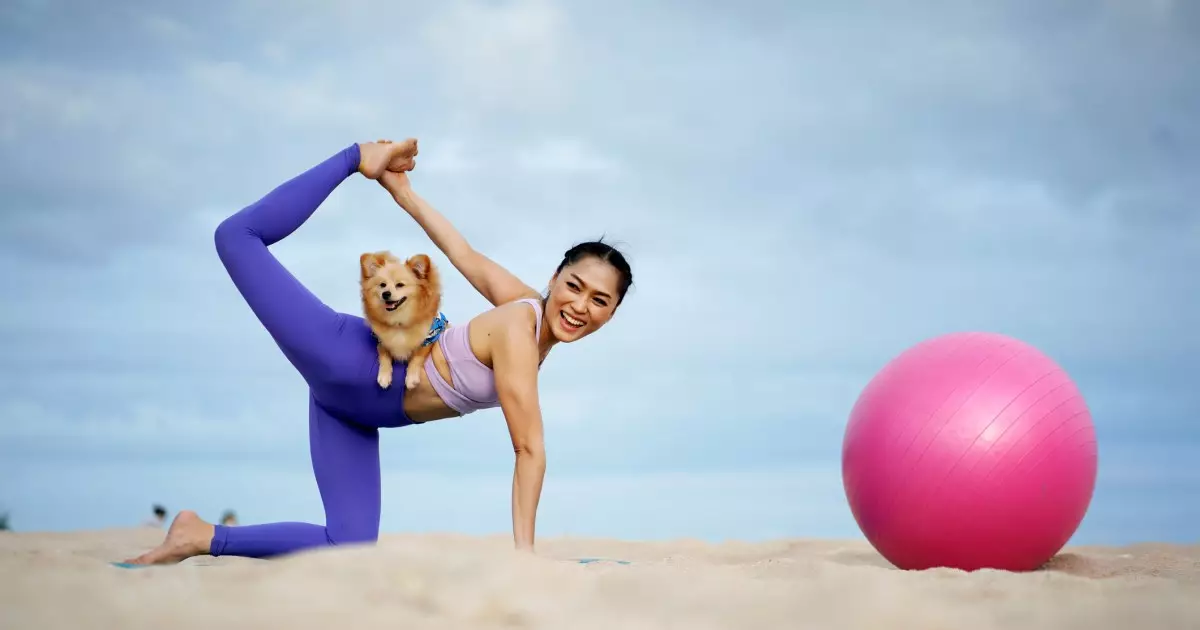Yoga has its roots deeply embedded in ancient Indian culture, characterized by a holistic approach to well-being that intertwines mind, body, and spirit. The exact timeline of its inception is obscure, but the practice has remained venerated among yogis throughout generations. Today, as yoga experiences a renaissance in the modern world, it accompanies a plethora of unique adaptations that reflect contemporary interests. Among these, the emergence of “doga” stands out as a fascinating blend of traditional yoga and pet therapy.
Understanding Doga: A New Way to Bond
Doga merges the serene practice of yoga with the joyous presence of dogs, creating an engaging experience for both the practitioner and their furry companions. While the premise appears straightforward – performing yoga in tandem with dogs – the reality is that the canines typically serve as supportive entities rather than active participants. Often, dogs become sources of comfort, helping practitioners achieve a deeper state of relaxation. However, it’s vital to manage expectations; though your dog may participate by lying nearby or providing gentle resistance, they are unlikely to emulate yoga poses.
Doga boasts an intriguing evolution into the realm of animal-assisted therapy. This unique approach acknowledges the bond between humans and their dogs, utilizing this connection to foster mindfulness. According to Mahny Djahanguiri, author of “DOGA: Yoga For You and Your Dog,” it may take considerable time for a dog to acclimate to this practice—sometimes up to six months. Understanding and honoring your dog’s comfort level is paramount; forcing participation can lead to stress for both parties and ultimately invalidate the essence of the practice.
The crux of doga is not merely the physical activity but rather the emotional synergy that occurs between dog and owner. Enthralling as it may sound, the reality is that the tranquility generated through yoga can resonate with dogs, promoting a shared experience of calm. During a doga session, moments of deep breathing and mindful stretching enhance the bond between human and pet, facilitating a greater understanding of each other’s needs and emotions.
While doga might not be suitable for every pair, the underlying principles of mindfulness and relaxation it emphasizes are universally beneficial. The moment spent in harmony with a pet can impart therapeutic effects, whether through traditional yoga or innovative adaptations like doga.
As the yoga community continues to grow and diversify, newer iterations beckon enthusiasts to explore unconventional avenues such as goat yoga or even drunk yoga. While these novel practices may elicit laughter and challenge traditional norms, they each contribute to a broader interpretation of yoga as a means of bringing people together, sometimes through the lens of humor or playfulness.
Ultimately, the beauty of yoga lies in its adaptability, allowing practitioners to discover what resonates with them. Whether through the tranquility of doga, the laughter of goat yoga, or the camaraderie of group sessions, the essence of yoga remains focused on connection—be it between oneself, others, or beloved pets. Embracing these diverse practices fosters a sense of community and exploration among those engaging with this time-honored tradition.

